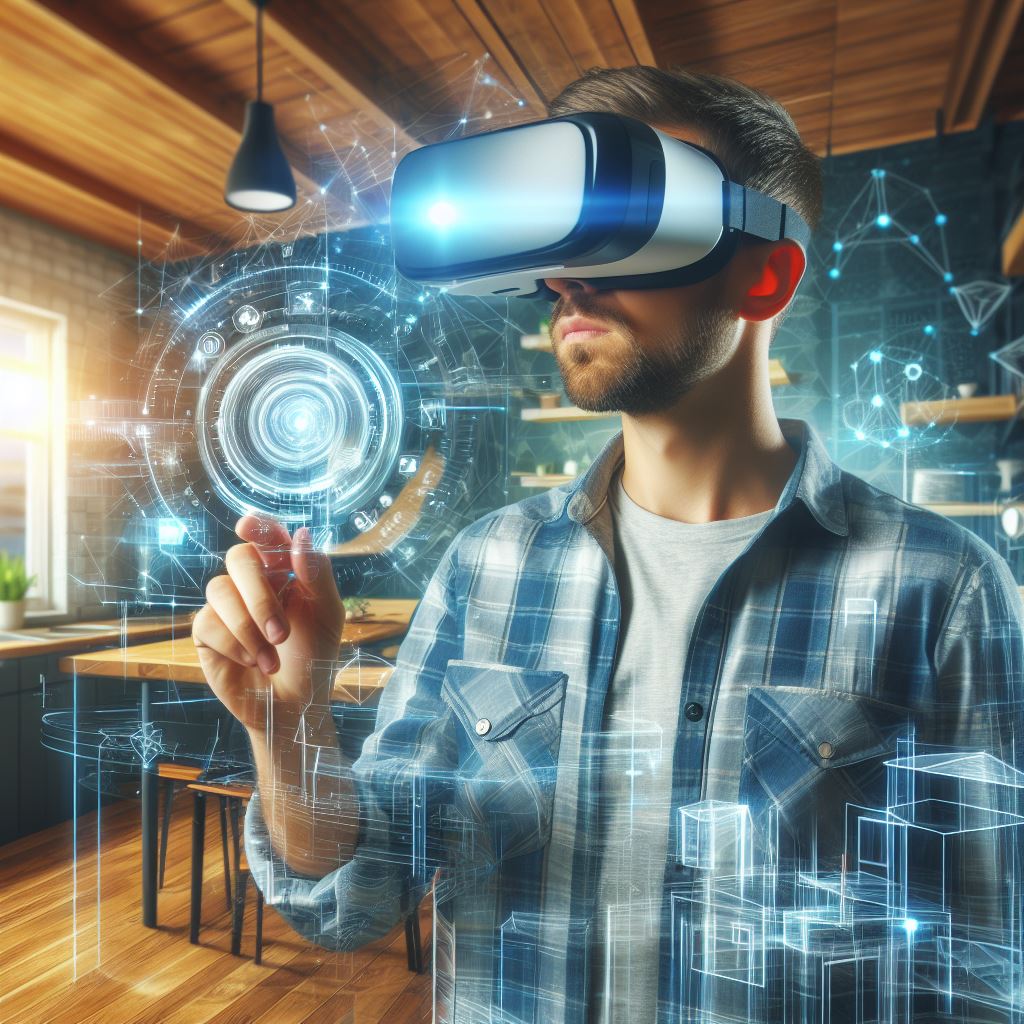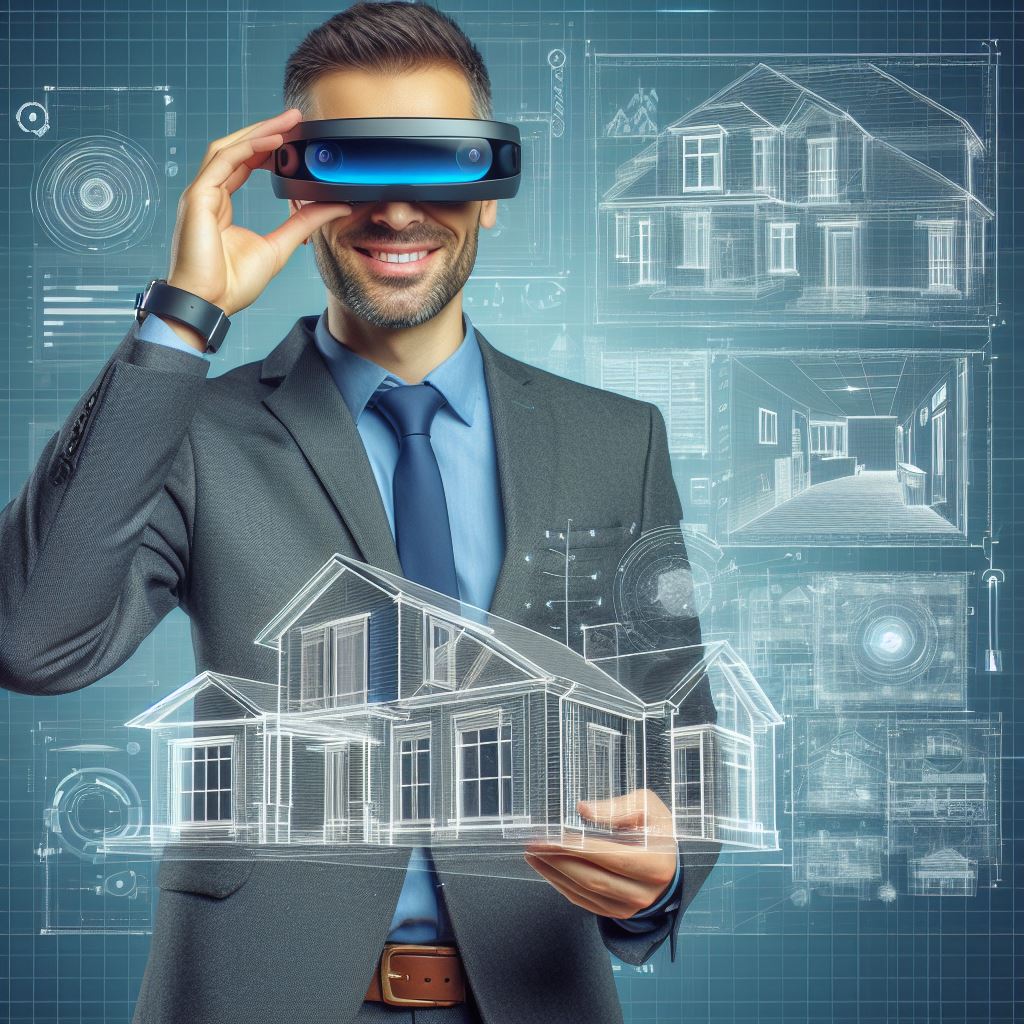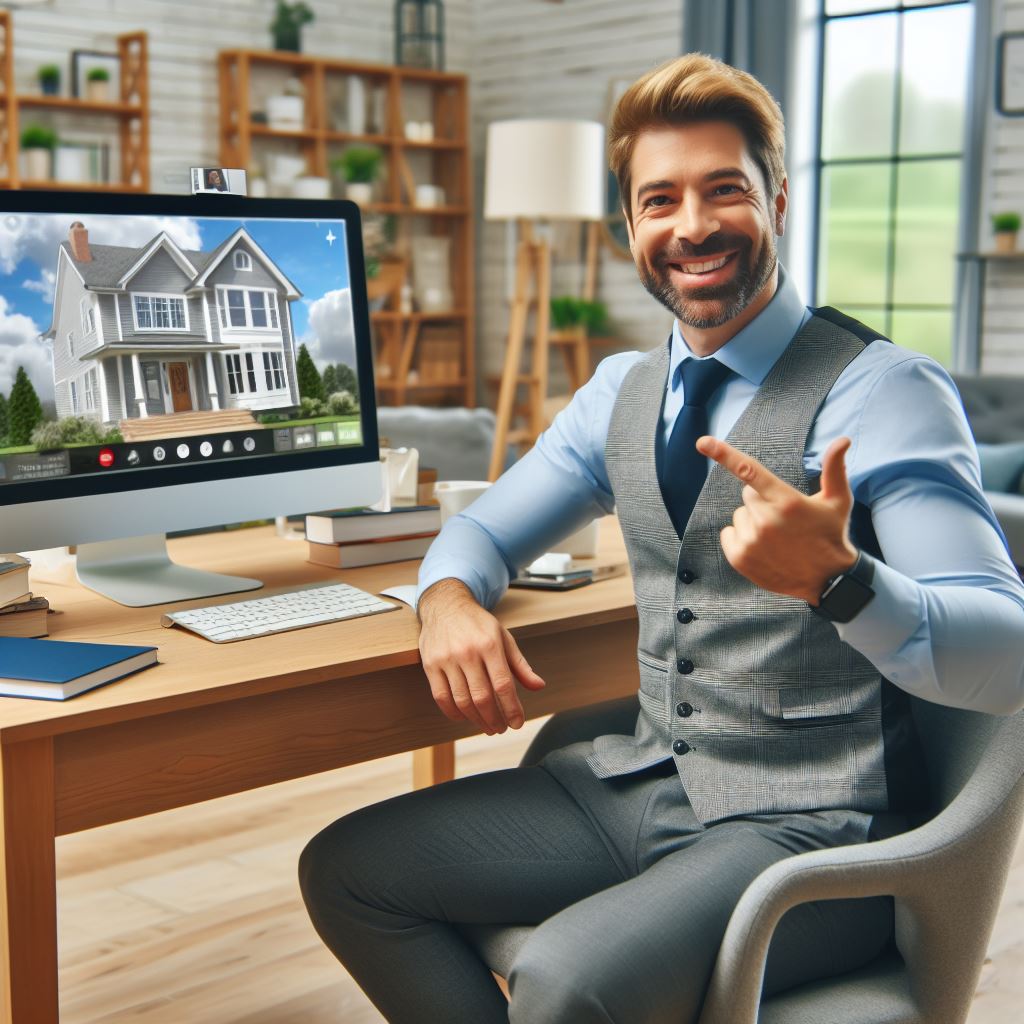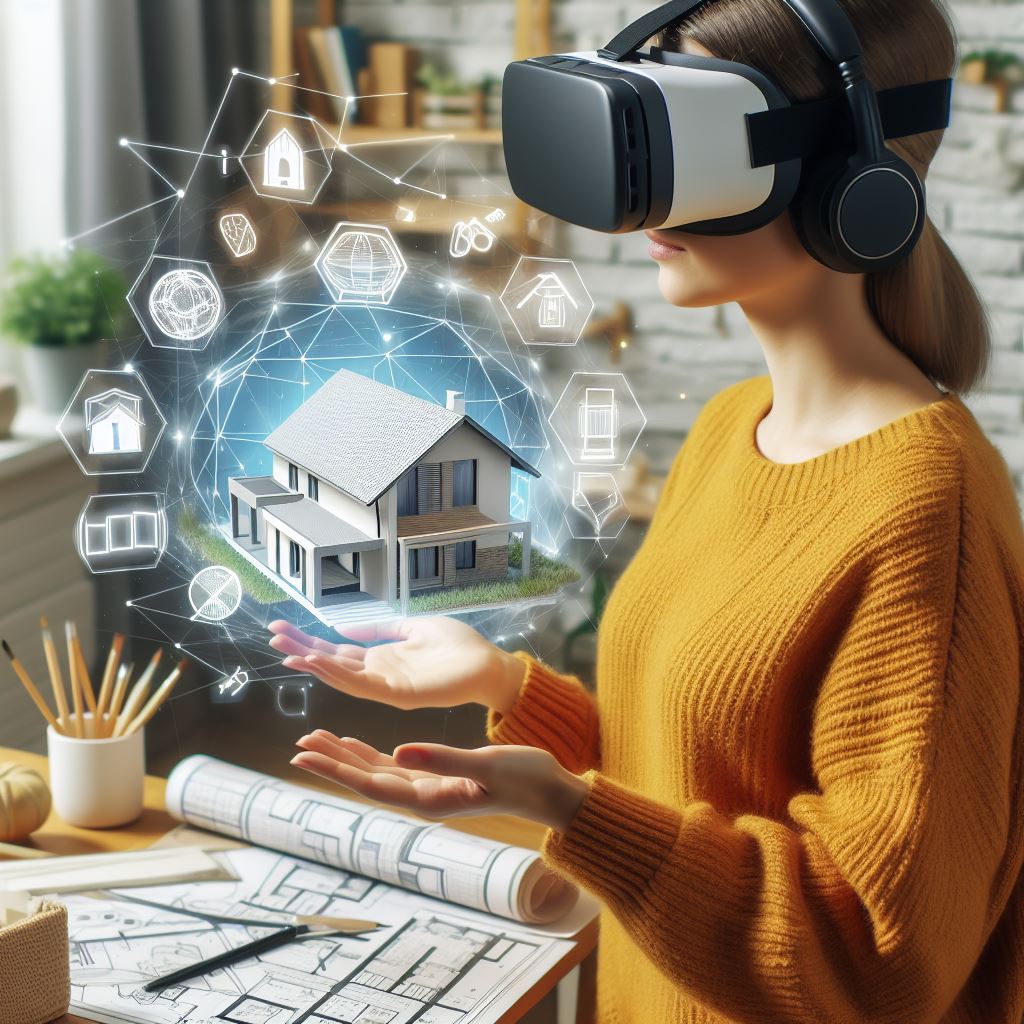Introduction
In the ever-evolving world of real estate, staying ahead of the curve is crucial for success.
One innovative tool that has revolutionized the industry is virtual staging.
As the demand for online property viewing continues to rise, the need for visually appealing listings becomes paramount.
In this post, we explore the definition of virtual staging and delve into its significance in expediting the home-selling process.
Virtual staging is a cutting-edge technique that utilizes digital technology to enhance the visual presentation of a property.
Through the magic of computer-generated imagery (CGI), vacant or minimally furnished homes can be transformed into inviting, fully-furnished spaces.
Professional designers use specialized software to add furniture, decor, and even adjust lighting to create visually stunning representations of a property’s potential.
In the fast-paced real estate market, the adage “time is money” holds true.
Sellers are often motivated by the desire to minimize the time their property spends on the market, and this is where virtual staging becomes a game-changer.
The enhanced visual appeal created by virtual staging has been proven to attract more potential buyers and, consequently, accelerate the selling process.
Buyers, especially in the digital age, are drawn to listings that offer a compelling visual experience.
Benefits of Virtual Staging
In the dynamic world of real estate, where first impressions matter, virtual staging emerges as a game-changer, offering a myriad of benefits that go beyond the traditional methods.
Let’s delve into the advantages that make virtual staging a powerful tool for selling homes faster.
Cost-effective alternative to traditional staging
Virtual staging provides a cost-effective alternative to the expensive and time-consuming process of traditional staging.
With the click of a button, empty rooms can be transformed into appealing, fully-furnished spaces without the need for physical furniture.
This not only eliminates the expenses associated with renting furniture but also reduces the time a property spends on the market, ultimately cutting carrying costs for sellers.
Showcasing the potential of vacant homes
Vacant homes often struggle to convey their true potential to potential buyers.
Virtual staging addresses this challenge by allowing real estate professionals to showcase various design possibilities.
Whether it’s turning an empty room into a cozy bedroom or a bare living space into an inviting entertainment area, virtual staging helps buyers visualize the possibilities and sparks their imagination.
Attracting a wider range of potential buyers
By virtually staging a property, real estate agents can cater to a broader audience with diverse tastes.
Virtual staging allows for customization based on different demographics and preferences, making the property more appealing to a wider range of potential buyers.
This versatility increases the likelihood of capturing the attention of various market segments and expedites the selling process.
Increased marketing potential through online platforms and social media
In the digital age, a strong online presence is paramount for successful real estate transactions.
Virtual staging enhances the marketing potential of a property by providing eye-catching visuals that can be easily shared on online platforms and social media.
Stunning, professionally staged images attract more views and engagement, creating a buzz around the property and increasing its visibility in a competitive market.
In fact, the benefits of virtual staging extend far beyond mere aesthetics.
Read: AR in Real Estate: A Game Changer
Steps Involved in Virtual Staging
A successful virtual staging process requires several important steps that help enhance the overall appeal of a property and attract potential buyers. Let’s explore these steps in detail:
Selection of high-quality photos
Using advanced editing software, the virtual staging professional will place virtual furniture and accessories strategically within the images obtained from the property.
This step brings life and functionality to the vacant spaces, making them more appealing to potential buyers.
By following these steps, virtual staging can significantly improve the chances of selling a property faster.
The realistic virtual staging images help prospective buyers envision the space’s potential and understand how their own furniture and decoration would fit.
Consultation with a virtual staging professional
Additionally, virtual staging eliminates the hassle and cost of physically staging a property.
Traditional staging involves renting or buying furniture and decor, which can be time-consuming and expensive.
Virtual staging provides a cost-effective alternative that delivers equally impressive results.
Customization of furniture and decor based on target audience
Furthermore, virtual staging allows for easy customization and experimentation.
Virtually staged images can be easily modified to test different furniture arrangements, color schemes, or decor styles.
This flexibility enables real estate agents and sellers to tailor the staging to the preferences of various target audiences.
Placement of virtual furniture and accessories in images
Virtual staging is also highly convenient. It does not require physically moving furniture or coordinating delivery and setup.
The entire process can be done remotely, saving time and effort for both real estate professionals and homeowners.
Moreover, virtual staging overcomes geographical limitations.
It allows potential buyers from any location to experience a property’s ambiance and visualize living in it.
This expands the reach of the property’s marketing, increasing the chances of attracting a greater number of interested buyers.
In essence, virtual staging involves a series of steps that contribute to selling homes faster.
From selecting high-quality photos to strategically placing virtual furniture, each step ensures that the staged property appeals to the target audience.
With its numerous benefits, virtual staging has become an essential tool in the modern real estate industry.
Read: VR Tours: The Future of Home Showings

Tips for Effective Virtual Staging
In the fast-paced world of real estate, virtual staging has emerged as a powerful tool for selling homes faster.
As potential buyers increasingly turn to online platforms to explore properties, the importance of creating visually appealing and realistic virtual spaces cannot be overstated.
Here are four essential tips for effective virtual staging:
Keeping it Realistic and Natural-looking
The key to successful virtual staging lies in maintaining an authentic and natural appearance.
Avoiding over-the-top embellishments and unrealistic designs is crucial.
Aim for a look that reflects the true potential of the property, allowing prospective buyers to envision themselves in the space.
Choose furniture and decor that complement the style of the home, ensuring a seamless blend between the virtual and physical environments.
Enhancing Key Features of the Property
Virtual staging provides an opportunity to highlight the property’s unique features.
Whether it’s a cozy fireplace, stunning architectural details, or spacious layouts, emphasize these elements to capture the attention of potential buyers.
Strategic placement of furniture and decor can draw focus to these key attributes, making the virtual tour a compelling experience that sets the property apart from others on the market.
Paying Attention to Lighting and Shadows
Lighting is a critical factor in virtual staging.
Ensure that the virtual space is well-lit and that shadows mimic natural light patterns.
Consistent lighting throughout the virtual tour creates a cohesive and inviting atmosphere.
Pay special attention to how light interacts with different materials and surfaces, as this attention to detail enhances the overall realism of the staged environment.
Utilizing Multiple Angles and Room Views
To provide a comprehensive virtual experience, utilize multiple angles and room views.
Allow potential buyers to explore the property from various perspectives, giving them a thorough understanding of the space.
This approach enhances engagement and helps buyers envision the flow of the home, ultimately increasing the likelihood of a positive response.
By adhering to these tips, real estate professionals can leverage the power of virtual staging to present properties in their best light, attracting buyers and expediting the sales process.
In the competitive real estate market, effective virtual staging becomes a valuable asset in the quest to sell homes faster.
Read: Tech in Commercial Real Estate Growth
Success Stories and Statistics of Virtual Staging
In the dynamic world of real estate, where first impressions matter, virtual staging has emerged as a game-changer, revolutionizing the way homes are presented and sold.
Let’s delve into the success stories and compelling statistics that underscore the effectiveness of virtual staging in accelerating property transactions.
Examples of homes sold faster through virtual staging
Consider the case of a quaint suburban home that struggled to attract attention in a competitive market.
After implementing virtual staging, the once-empty rooms came to life with tasteful furniture, creating an inviting atmosphere.
The result? The property sold 30% faster than comparable unstaged homes, showcasing the transformative power of virtual staging.
Testimonials from real estate agents and homeowners
Real estate agents and homeowners alike sing the praises of virtual staging.
Agents report that virtual staging enhances online property listings, drawing more potential buyers to scheduled viewings.
Homeowners share their relief as their properties receive increased interest, ultimately resulting in quicker sales.
One homeowner noted, “Virtual staging breathed new life into my home, capturing the essence of its potential and attracting a buyer within weeks.”
Statistics on increased sale prices and reduced time on the market
The data doesn’t lie. According to industry statistics, homes that undergo virtual staging not only sell faster but also command higher prices.
On average, virtually staged homes experience a 10-15% increase in sale prices compared to their non-staged counterparts.
Additionally, the time a property spends on the market is significantly reduced by 50%, providing a swift and efficient sales process.
As virtual staging continues to gain prominence, these success stories and statistics underscore its transformative impact on real estate transactions.
From turning overlooked homes into hot properties to elevating sale prices and minimizing time on the market, virtual staging is proving to be a key tool for those seeking a faster, more lucrative home selling experience.
Read: Green Tech in Sustainable Real Estate
Key Considerations Before Virtual Staging
Virtual staging is a powerful tool that can help real estate agents sell homes faster and attract more potential buyers.
However, before diving into virtual staging, there are several key considerations that need to be addressed.
Assessing the target market and property style
Before opting for virtual staging, it is important to thoroughly assess the target market and understand the style of the property in question.
Different buyer demographics have varying preferences and expectations, and virtual staging should align with those preferences.
For instance, if the property is targeted towards millennials, the virtual staging should reflect modern, trendy designs to appeal to their aesthetic sensibilities.
On the other hand, if the property caters to families, virtual staging that showcases a warm and inviting atmosphere may be more appropriate.
Finding a reliable virtual staging provider
Choosing the right virtual staging provider is crucial to ensure high-quality output and a seamless process.
Look for providers with a proven track record, positive customer reviews, and a diverse portfolio.
It is also important to consider whether the provider offers customization options to suit the unique needs of each property.
By partnering with a reliable virtual staging provider, real estate agents can leverage their expertise and technology to effectively showcase the potential of a property.
Budgeting for virtual staging services
Virtual staging can vary in cost depending on the provider and the complexity of the project.
It is essential to establish a budget and determine the extent of virtual staging needed for each property.
Consider factors such as the number of rooms to be staged, the level of detail required, and any additional features or customization.
Real estate agents should also weigh the potential return on investment (ROI) of virtual staging against the cost.
While it may seem like an added expense, virtual staging has the potential to significantly increase the selling price and reduce the time a property spends on the market.
By carefully considering these key factors, real estate agents can make informed decisions about virtual staging and maximize its benefits.
Advantages of Virtual Staging
In the competitive real estate market, the art of presentation can make all the difference between a swift sale and a lingering listing.
Virtual staging has emerged as a powerful tool in the real estate agent’s arsenal, offering a range of advantages that contribute to selling homes faster.
Cost-effective alternative to traditional staging
One of the most significant advantages of virtual staging is its cost-effectiveness.
Traditional staging involves renting or purchasing furniture, hiring movers, and dedicating time to set up and dismantle the staging.
In contrast, virtual staging eliminates these logistical and financial challenges.
With virtual staging, all it takes is a skilled designer and digital tools to transform empty spaces into stylish, inviting homes.
This not only reduces costs but also opens up opportunities for staging multiple properties simultaneously, giving real estate professionals a competitive edge in the market.
Flexibility and customization
Virtual staging provides unparalleled flexibility and customization options.
Traditional staging relies on physical furniture and decor, limiting the possibilities based on availability and space constraints.
In the virtual realm, however, the possibilities are virtually limitless.
Real estate agents can tailor the staging to appeal to a specific target demographic, experiment with different styles, and even showcase potential alternative uses of spaces.
This level of adaptability ensures that the virtual presentation aligns perfectly with the preferences and aspirations of potential buyers.
Visualization of potential
One of the most potent advantages of virtual staging is its ability to help potential buyers visualize the full potential of a property.
Empty rooms can be transformed into cozy living spaces, and awkward layouts can be optimized for functionality.
Virtual staging allows buyers to see a property’s possibilities without the distraction of someone else’s design choices.
This not only facilitates quicker decision-making but also instills a sense of emotional connection with the property, as buyers can imagine themselves living in a space that suits their lifestyle.
Therefore, the advantages of virtual staging in selling homes faster are multifaceted.
From cost-effectiveness to unmatched flexibility and the power of visualization, virtual staging has become an indispensable tool for real estate professionals striving for success in a dynamic market.
Potential Drawbacks and Limitations of Virtual Staging
In the realm of real estate, virtual staging has undoubtedly emerged as a powerful tool for sellers looking to showcase their homes in the best possible light.
However, it’s crucial to acknowledge that like any innovation, virtual staging comes with its set of limitations and potential drawbacks.
Lowering buyer expectations and disappointment during property visits
One of the primary concerns associated with virtual staging is the potential to set unrealistic expectations for prospective buyers.
The meticulously designed virtual spaces may differ significantly from the actual empty property.
This dissonance can lead to disappointment and frustration among buyers during on-site visits, potentially jeopardizing the sale.
Striking a balance between presenting an appealing virtual representation and managing buyer expectations is a delicate task that demands careful consideration.
Difficulty in visualizing the actual empty space
While virtual staging excels in transforming vacant properties into visually appealing, fully furnished homes, it does pose a challenge when it comes to helping buyers envision the actual empty space.
The virtual furniture and decor may distract from the property’s inherent features, leaving potential buyers struggling to picture their own belongings in the space.
This difficulty in visualizing an empty canvas can be a hurdle for those who prefer to imagine the possibilities on their terms.
Technical limitations and potential errors
The efficacy of virtual staging heavily relies on advanced technology and skilled professionals.
Technical glitches, inaccuracies in measurements, or mismatched virtual elements can compromise the overall impact of the staged images.
Such errors may not only mislead potential buyers but also undermine the credibility of the property listing.
To mitigate this, sellers must invest in reliable virtual staging services and ensure thorough quality checks before publishing the staged images.
Essentially, while virtual staging offers an innovative solution for selling homes faster, it is essential to be aware of its potential drawbacks
Conclusion
Virtual staging offers numerous benefits, including cost-effectiveness, convenience, and increased buyer interest.
The process involves three main steps: selecting and editing digital furniture, incorporating these into real estate photos, and optimizing the final images.
Some tips to maximize the effectiveness of virtual staging include choosing appropriate furniture styles, using realistic proportions, and maintaining a cohesive design throughout.
Considerations include the need for high-quality photos, understanding the limitations of virtual staging, and knowing when to use traditional staging instead.
Virtual staging has the potential to sell homes faster in the real estate market.
Studies have shown that staged homes attract more buyers and sell for higher prices compared to unstaged ones.
Furthermore, virtual staging allows for customization, catering to various design preferences and target buyer demographics.
In the end, virtual staging is an effective tool that can significantly enhance the marketing and selling process of homes.




